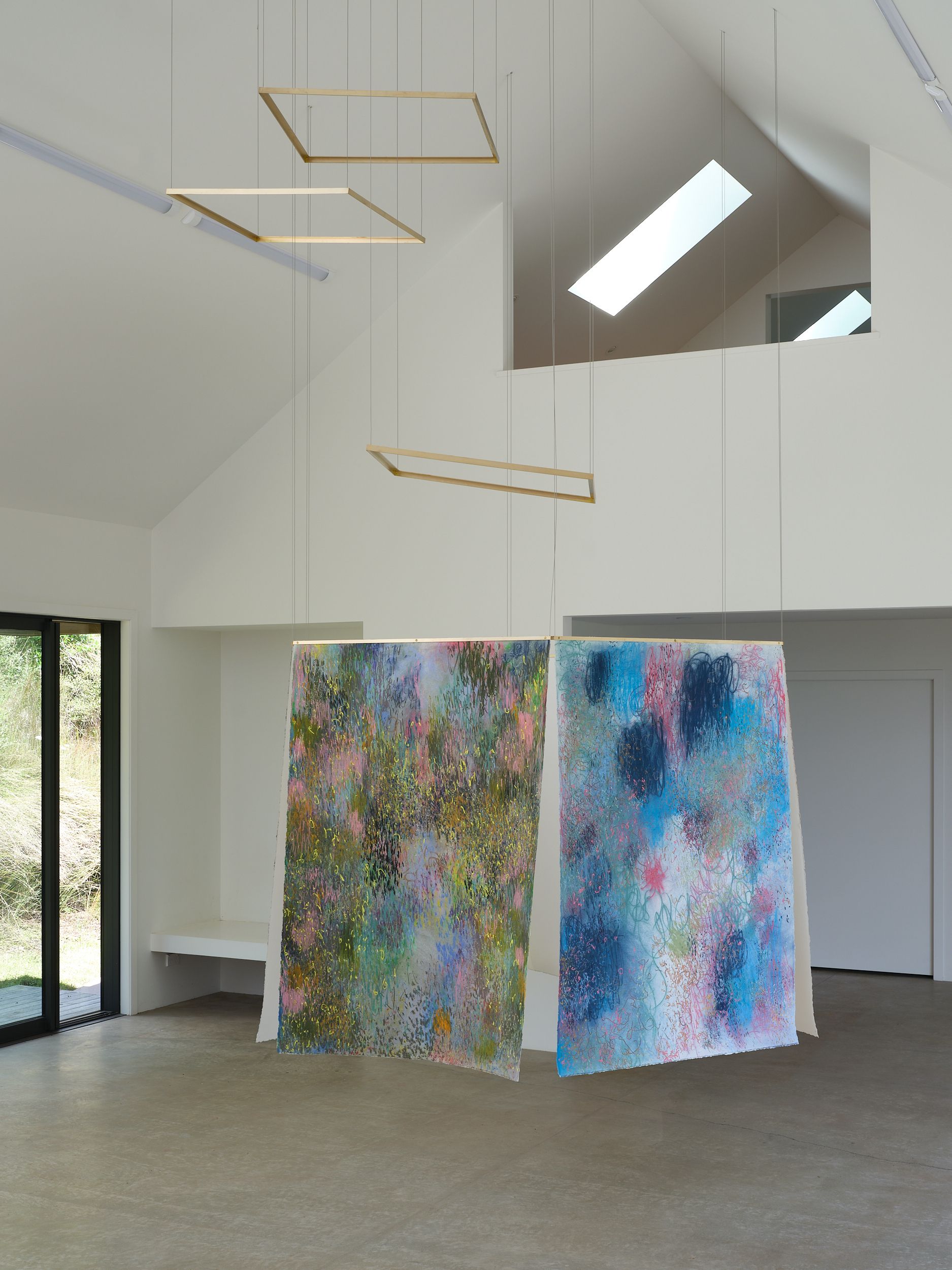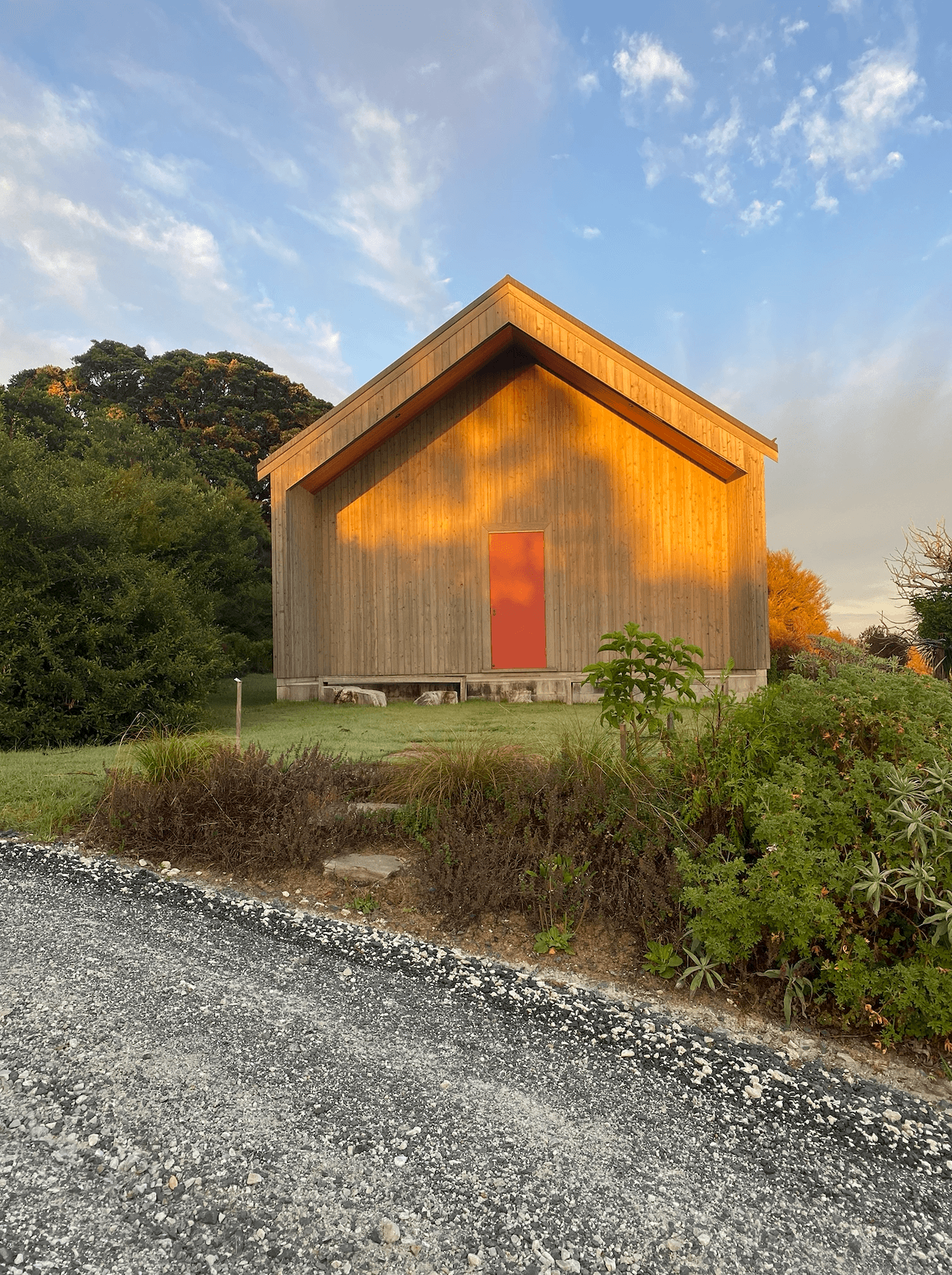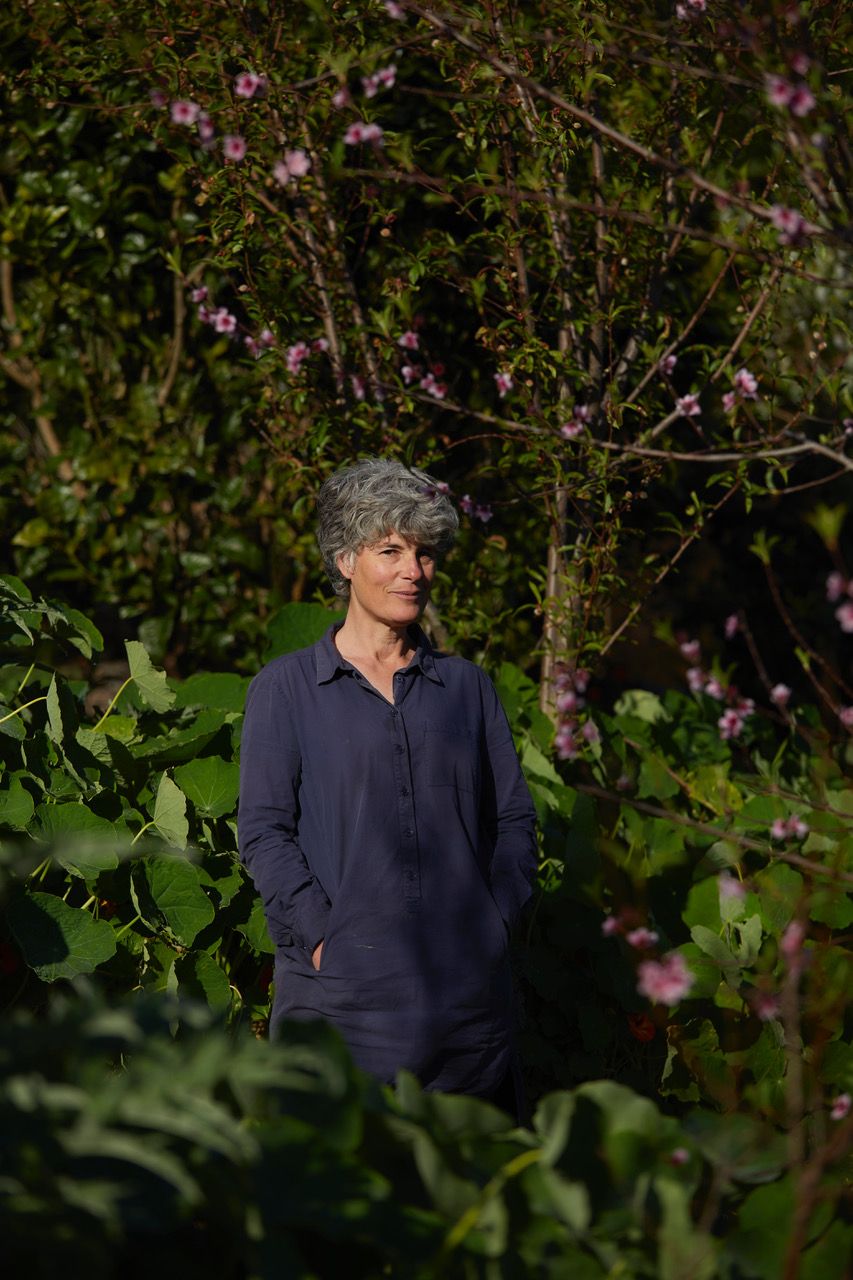'Inner-tuition' - Inside the Studio & Mind Of Sarah Smuts-Kennedy
There are no lines between life and art for Sarah Smuts-Kennedy - Linda Gilbert visits the contemporary artist's creative sanctuary to soak it all in.
Led through the lush vegetable garden, past the ancient pōhutukawa tree standing sentinel - I stepped over the threshold into the studio of contemporary artist Sarah Smuts-Kennedy. Emerging hours later in the dark, all my senses had been activated and opened. Something very special had taken place, but what that was I can’t quite say. A liminal encounter. Some kind of strange magic?
I had intended to interview the artist for an hour. But it turned into an exciting, three-hour sensory adventure.
Smuts-Kennedy’s quicksilver conversation darted across her broad research, touching on subjects such as Goethe’s theories, principles of thermodynamics, syntropy and entropy (ideas of how living systems move between life and death impulses) - right through to how she engages in a practice of deep listening, using what she describes as ‘inner-tuition' to make work with and within the wider field.
Visually embraced by large drawings on every wall and an alter-like installation titled Discharge, the fields of colour gently yet emphatically communicated a host of subtle feelings and emotions. I sensed liveliness and joy mainly - but after sitting with them, some quietly whispered a deep sadness, another death, and many of regeneration. Life and its cycles translated poetically by their maker to become resonance tools for our time.

There we sat under the cathedral ceilings in the fading late autumn light - sipping a brew of mandarin skins, kawakawa leaves and liquorice.
Completed three years ago, the studio has a grand but simple design aligned to the energies of the earth it rests upon. The sweeping views across the Mahurangi Peninsula down to the coast are breathtaking. Like many great works of art, this studio had a slow, difficult birth. It replaces an old scout hall that had been relocated onto the land that Smuts-Kennedy and her whānau had begun restoring. One night before the project was finished, the hall burnt to the ground. The old native timbers charred and the earth scorched - all traces of scouting life exorcised.
This extreme event pushed Smuts-Kennedy to listen more intently to the land and the other presences she shares the space with.
It took another ten years before the studio would be built. Smuts-Kennedy used her pendulum to work with the site and calculate the dimensions, form and placement of her current studio. Aligned to true east with an earth acupuncture point embedded in its platform, it emanates a feeling that potent things have the potential to emerge within.

The artist’s large-scale, pastel-on-paper works share a similar method to automatic drawing; a process by which the artist intentionally attempts to suppress the conscious mind, forgoing editing and intellectual critique of the work. Automatic drawing as a process was invoked by many visionary artists such as Georgiana Houghton and Hilma af Klint and was picked up later by surrealists, such as André Masson.
There are several schools of thought surrounding how the artist’s agency might be relinquished. Some subscribe to the psychological ideas developed by Freud and Jung that relate to clearing a path beyond the rational, thinking brain so the subconscious can emerge. Others, such as Smuts-Kennedy, take a more spiritual approach. She explained that through a disciplined process of devotion and divination agency is co-created with unseen energies. She explains: “For those willing to listen carefully, these energetic forces can be worked with.”
Describing her process for collaborating with these forces, Smuts-Kennedy shared that it includes asking surprisingly practical questions, such as which colours and materials are to be used. The answers come via a pendulum or sometimes a felt sense of being told. It could be described as opening up by listening inwards, enabling agency to be expanded beyond a singular sense of self.
The results are as much a revelation to her as to the audience who come to view them later. Sometimes they arrive complete, at other times they are ‘composted’ or energetically upgraded according to further instructions received.
Smuts-Kennedy is careful to note “This is not about editing as that suggests some are better than others. Part of the process is to trust that what comes through is what is needed. It is not for me to assess their usefulness. I think of them as tools for our time and am interested in finding ways to allow something beyond myself to emerge. Something that is possible when I allow an expanded sense of self to find its own expression.”
There is no separation between the art of Sarah Smuts-Kennedy and the rest of her life – which she observes as research.
Embedded as part of her process, she investigates living systems such as biodynamic gardens, composting and natural lifecycles. These recurring cycles and their lessons always return to a universal principle of finding balance. Her practice looks at living systems which are continuously attempting to balance polarities such as order and chaos, rupture and repair, intentional and intuitive, grounded and etheric.
Her deep reverence for the planet and what it means to be a human on the Earth sharing space with other living beings underpins Smuts-Kennedy’s practice as a whole.

In 1911 Kandinsky wrote the seminal text On the Spiritual in Art. He advocated for a move away from the material into the spiritual realm, which he believed could express all emotions and soothe the soul. But what does a spiritual practice look like in a contemporary context?
This is a question Smuts-Kennedy discusses with other NZ contemporary artists who meet via Zoom as often as they can - as a means to support each other's research. Collectively, the group agree that there are common traits they share: devotion to their practice, faith in the process, trust in themselves and the ability to surrender.
Smuts-Kennedy is at the vanguard of a movement that has, in the past, been denigrated by academia and the art world - but thanks to her and others’ spirited endeavours, times are changing.
More artists are opening up to different ways of being in the world and exploring spirituality through the mechanism of art. Intuitive making is gaining traction. Having a spiritual art-based practice is finding expression and momentum, not only in Aotearoa but internationally. Smuts-Kennedy’s practice is recognised as part of this shift and was recently referenced by international arts writer, Jennifer Higgie in her groundbreaking book The Other Side - a Journey into Women, Art and the Spirit World.
The final sensory experience of my encounter with Smuts-Kennedy involved lying beneath Discharge in an East-West orientation on the studio floor. A hanging hexagonal installation comprising six large-scale pastel works on paper, held together with brass divining rods, floated above me. It began to shimmy and shake - beyond any movement my breath could create.
Eventually, it came to rest. And so did I. Quite an achievement after such an intellectually and intuitively stimulating afternoon.
Through these foundational principles that culminate in her letting go to something that is difficult to explain in language, Smuts-Kennedy translates intuitive and chaotic mark-making into transcendent abstract colour fields and installations, in service to the possibility they may give rise to a sense of harmony in the spaces we all share with other things.
Smuts-Kennedy is currently working towards exhibiting at the Sydney Contemporary Art Fair, where she is represented by Laree Payne Gallery. A publication - Energy Work - on the immersive installation she created alongside artist Kathy Barry at the Te Pātaka Toi Adam Art Gallery in 2022 will be released later this year.